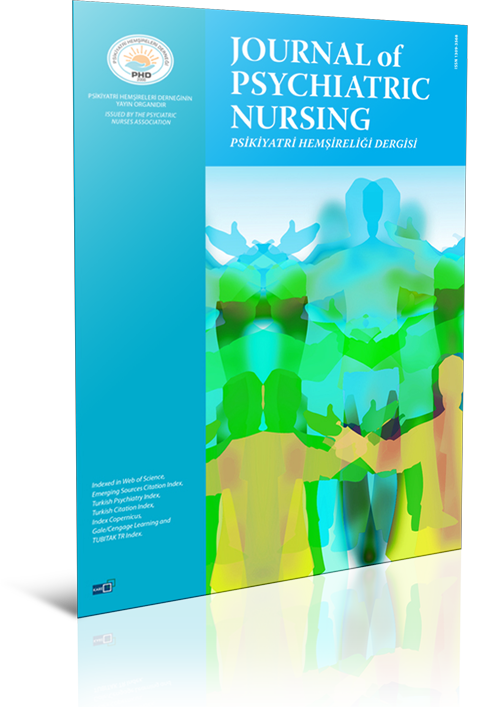
The prevalence of intimate partner violence against women and women's methods of coping with partner violence*
Aysun Babacan Gümüş, Sevinç Şıpkın, Özden ErdemDepartment of Nursing, Çanakkale Onsekiz Mart University Faculty of Health Sciences, Çanakkale, TurkeyINTRODUCTION: The aim of this study is to determine the prevalence of intimate partner violence against women, the types of violence that women are exposed to and their relationship with women's methods of coping.
METHODS: The study was conducted with 150 women at two different social life centers affiliated with a municipality from September 2015 to June 2016. The data were collected using an interview form and the Coping with Stress Inventory (WOCI). Frequency and percentage distributions, the Kolmogorov-Smirnov test, Student's t test and the Mann-Whitney U test were used to analyze the data.
RESULTS: Of the women, 67.3% were exposed to least one type of violence in their lifetime, and 62.7% were exposed to least one type of violence in the last year. Of them, 34.7% were exposed to physical violence in their lifetime, and 21.3% were exposed to physical violence in the last year; 52.7% were exposed to emotional violence in their lifetime, and 48.7% were exposed to emotional violence in the last year; 14% were exposed to sexual violence in their lifetime, 11.3% were exposed to sexual violence in the last year; 22.7% were exposed to economic violence in their lifetime, and 21.3% were exposed to economic violence in the last year. The women who were exposed to physical, sexual and economic violence were less likely to use the self-confident and optimistic approach than the others. The women who were exposed to violence used the social support approach less than the others. The women who were exposed to emotional violence were more likely to use the submissive approach than the others.
DISCUSSION AND CONCLUSION: The women were exposed to emotional violence most. The women who were exposed to physical, sexual and economic violence used the problem-focused approach less often. The women who were exposed to emotional violence were found to use the emotional-focused approach more often. New ways for women to cope with violence should be developed.
Kadına yönelik eş şiddeti yaygınlığı ve kadınların baş etme yöntemleri*
Aysun Babacan Gümüş, Sevinç Şıpkın, Özden ErdemÇanakkale Onsekiz Mart Üniversitesi Sağlık Bilimleri Fakültesi, Hemşirelik Bölümü, ÇanakkaleGİRİŞ ve AMAÇ: Bu çalışmanın amacı kadına yönelik eş şiddeti yaygınlığını, kadınların maruz kaldığı şiddet davranışlarını ve baş etme yöntemleri ile ilişkisini belirlemektir.
YÖNTEM ve GEREÇLER: Çalışma Eylül 2015Haziran 2016 tarihleri arasında bir belediyeye bağlı iki farklı Sosyal Yaşam Evinde 150 kadın ile yürütülmüştür. Veriler Görüşme Formu ve Stresle Başa Çıkma Tarzları Ölçeği kullanılarak toplanmıştır. Verilerin analizinde sayı-yüzde dağılımı, Kolmogorov Smirnov testi, Student t-testi ve Mann-Whitney U testi kullanılmıştır.
BULGULAR: Kadınların %67.3ü yaşam boyu, %62.7si son bir yılda en az bir şiddet türüne maruz kalmıştır. Fiziksel şiddet yaşam boyu %34.7 son bir yılda %21.3, duygusal şiddet yaşam boyu %52.7 son bir yılda %48.7, cinsel şiddet yaşam boyu %14, son bir yılda %11.3, ekonomik şiddet yaşam boyu %22.7 son bir yılda %21.3 oranında gerçekleşmiştir. Şiddete maruz kalan kadınlarla kalmayanların baş etme yöntemleri karşılaştırıldığında; fiziksel, cinsel ve ekonomik şiddete maruz kalan kadınların kendine güvenli ve iyimser yaklaşımı daha düşük düzeyde kullandıkları belirlenmiştir. Fiziksel şiddete maruz kalan kadınlar sosyal destek aramayı daha düşük düzeyde kullanmaktadır. Duygusal şiddete maruz kalanların ise boyun eğici yaklaşımı daha yüksek düzeyde kullandıkları belirlenmiştir.
TARTIŞMA ve SONUÇ: Kadınlar en çok duygusal şiddete maruz kalmaktadır. Fiziksel, cinsel ve ekonomik şiddete maruz kalan kadınlar problem odaklı yaklaşımları daha düşük düzeyde kullanmaktadır. Duygusal şiddete maruz kalan kadınlar ise duygusal odaklı yaklaşımları daha yüksek düzeyde kullanmaktadır. Şiddetle mücadelede kadınların baş etme yöntemlerinin geliştirilmesi önerilmektedir.
Manuscript Language: Turkish



















